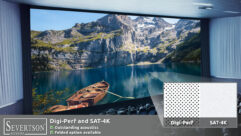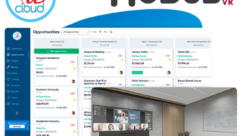
D-Cinema Installers
Oct 1, 2007 12:00 PM,
By Michael Goldman

One recent evening, just after I finished editing this month’s cover story on the installation of Sony 4K digital-projection systems in Chicago’s Rosemount 18 cineplex, my wife and I headed to the movies. Typically, it completely slipped our minds that the theater near where we live was closed, undergoing its own renovation into a new, high-tech ArcLight Cinema complex. Even though we didn’t get to see a flick, it dawned on me that the digital-cinema trend in the world of feature film exhibition has the potential to open up new business opportunities for the installation community.
To be sure, the rollout of digital cinema has been slow for all sorts of technical and economic reasons, but it is happening. In theory, this represents opportunities for installers and integration companies to get in on the action. For right now, at major theatrical complexes, it’s still a hardy few on the front lines — Sony itself installed the projection systems at the Rosemount. (For more on the installation, see Jay Ankeney’s story on p. 68.)
Technicolor Digital Cinema is one of the heavyweight players in the D-Cinema installation game right now. Curt Behlmer, that company’s senior VP of digital-cinema operations, strongly agrees that golden opportunities are looming for the installation community on these jobs, but he cautions the current state of the transition requires technicians to straddle two worlds.
“There is tremendous opportunity for integrators, but it is still necessary for people working in the conversion business to understand both traditional technology and digital technology,” Behlmer says. “A challenge for companies like ours is to hire people and train them in both competencies. The traditional AV market is very capable with the digital side of the business, but most of them have little experience on the film side. Since the current state of things requires us to tie these systems into auditoriums with existing legacy systems, including film projection systems, we need those systems to co-exist. We are developing training programs and looking for qualified field and engineering resources so that when this conversion does move to a larger volume and pace, we’ll be able to get those resources into the field. We are also participating with InfoComm and others to move this training along.”
Behlmer adds this process will get easier as digital cinema becomes more ubiquitous, and the reliance on existing film equipment declines.
“It’s a different [installation] model than the consumer model [for home theaters], that’s for sure. But there is no question we [will] have a need for more skilled technical service people as this thing moves forward.”










